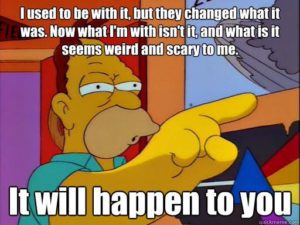The Kids are Alright – Learnings from Voxburner’s Youth Marketing Strategy in New York
by Anvil on October 9, 2019conferencesIn late September, UK-Based youth-research-firm Voxburner hosted its annual YMS (Youth Marketing Strategy Summit) in New York City. The event included speakers from Crocs, Starbucks, Mini-BMW Group, Burger King, The Walt Disney Company, TickTok, Instagram, Nike, Twitter, Unilever and many many more covering topics ranging from Online vs. In-Store Shopping and Influencer Marketing to The Last Taboos for Young People and Remaining Relevant with Gen Z.
That’s a lot to unpack and a lot to cover, so to make things easier for you as the reader and me as the writer of this blog, here are some of the biggest takeaways from YMS NYC 2019
Gen Z is set to become the largest consumer generation by 2020
If you think your e-commerce brand can survive by doing ignoring Gen Z, you should very much reconsider this thinking. While some brands do make products for older demographics, Gen Z is coming and they’re coming to the marketplace in a massive wave. And while you may not be looking to reach them when they enter the workforce for the first time, they will be getting older sooner or later. Understanding how they think and buy now, will set you up for continues success further down the road.
Many Brands are Missing Out on The Second Round of Back to School
When you think of back to school, what likely comes to mind the end of summer. While this is true – especially for parents with kids under the age of 18, there is a second back to school – Spring Semester. Maybe students took the first semester off, or maybe they were told they couldn’t stay in their dorms over the winter break – either way college students often treat the beginning of Spring Semester like they do the Fall Semester, buying dorm décor, school supplies, clothes and just about everything else.
“The Idea of Online Shopping is the be Quick”
This may seem like a no-brainer, but it should be yelled from every rooftop until every e-commerce site and the company has made the process of purchasing (or converting) on their site as easy and simplified as possible.
Think about your site as it stands now. How many hoops (or pages) do people need to jump through to before they’re entering their billing information on your site? Not selling anything on your site, but still looking for people to add their information before you contact them? Is their address really necessary for that? The bottom line, people are going to your site to purchase because it’s easier than going to the store. Don’t try to flip this situation by making the entire process cumbersome.
Facebook is Still Alive, Instagram is Thriving and Tiktoc is the New Kid on the Block
For what seems like a decade, we’ve heard Facebook is dying or dead to younger generations. That’s actually not the case. One of the most interesting statistics that was pointed out by a speaker was that 70% of kids from lower-income households use Facebook.
While Instagram TV still is nowhere as big as the platform had hoped, it’s one of the easiest ways to game the Instagram algorithm because the platform REALLY wants to make it work.
While engagement numbers and reports can shed a whole lot of insights into your social media content (both organically and promoted) you shouldn’t overlook the comments. You may look at the report and see 100 reactions and 30 comments, but what are they? Are users laughing at your content? Are they making calling you out for being wrong or inauthentic in the comments? Using this data can be super beneficial when it comes to developing your next round of social creative.
You Can’t Just Buy 18-25 Year Olds
I’m not saying that older generations were easily persuaded (and I don’t think anyone at the conference was either), but unlike the generations before them, Gen Z and Millennials are for more passionate about brands and products that have a story and/or are supporting a cause that they’re passionate about.
The easiest way to do this is through a story. If your product has a story or your brand has a story, people want to be part of something, so bringing consumers into that will likely make them more passionate about what’s connected to that – shoes, clothes, etc. Think of all the cool Michael Jordan stories that are connected to all of the colorways of his shoes – from the Flu Game to the Free-Throw-Line Dunk.
You better not take long to get your key message across or catch Gen Z’s attention either. While you have on average 12 seconds to catch a millennials’ attention before they move on, you have only 8 seconds to catch the attention of Gen Z.
Marketing to Gen Z is Marketing to Everyone
Look, everyone wants to be young. No matter how old you are, you really want to look like you know what’s cool and what isn’t. So you may be thinking “I don’t need to be reaching Gen Z, because my customer base is just fine.” That may be true, but you can keep those older customers while reaching out to younger ones too. Look no father than Pepsi, they’ve been the choice of the next generation for how long now?
But if you don’t know where to start with all of this youth marketing stuff, the best and easiest thing you can do is ingrain yourself in it. Don’t stick your nose up to everything kids do or like. Don’t be like Abe Simpson. Sit down with the intern at your company. Talk to the kids next door. Chances are, what you thought was hip and cool is no longer hip and cool. You may learn some new phrases and rethink your marketing strategy at the same time.

